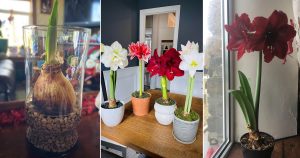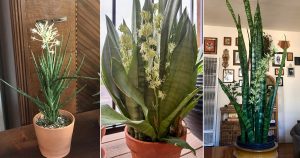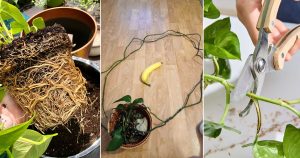In the past, I’ve shared my preferred method of dealing with aphids, ladybugs. They are still my favorite way to get rid of aphids, but I’ve noticed that it’s harder to keep ladybugs around on my new balcony, probably because there is less nearby landscaping that they like. And since I’ve started growing seeds in my potting shed, I’ve somehow developed an aphid problem in there (how did aphids get in my garage?). Obviously I can’t release ladybugs in my garage!
Preventing Aphids From Arriving
First, don’t over fertilize with nitrogen fertilizer. Most of the time this happens because someone is using a Miracle Grow type fertilizer more often than the package recommends. But you can over-fertlize with organic fertilizers too, so always follow package instructions. Heavy applications of nitrogen cause tons of weak new growth that aphids love. You might as well throw out a welcome mat.
Second, keep ants off your balcony or patio. Ants “farm” aphids, moving them from plant to plant and harvesting their honeydew secretions. If you can keep ants away, you can prevent them from bringing aphids to your plants.
Finally, another way of preventing aphids from attacking your plants it to start them indoors and provide a transparent barrier (cloches, clear plastic “tarps,” etc) for them when they are first moved outdoors. Plants are most susceptible to irreparable damage from aphids when they are young. If you can prevent aphids from getting to your seedlings you’ll give them a better chance.
What to do When You Find Aphids
If you see just a few aphids, cut those leaves off the plant and throw them in the garbage. It’s important to not allow your plants to become infested, because aphids are more difficult to treat when there are already hundreds (or thousands) of them. A female can produce 50-100 offspring in her lifetime, and her offspring are ready to reproduce a week after birth. So you can see how things can quickly get out of hand.
Aphids at multiple different life stages
If the plant is sturdy (such as a rose) you can blast the aphids off the plant with a strong spray of water, though not all container gardeners have easy access to a hose. You can use a spray bottle with water in it, but I find this to be too tedious.
In my potting shed, I have been using insecticidal soap with great success. It’s an organic option that is great in situations where it’s not really possible to use biological controls, such as lady bugs. You have to spray the plants thoroughly, covering both the tops and bottoms of the leaves to the point that they are dripping with the liquid. Wait at least a week before reapplying (only if needed).
It should be noted that if you are committed to allowing natural controls to take care of aphids, you shouldn’t use insecticidal soap, because you’ll also kill whatever beneficials have arrived, and more predatory insects will only arrive if there is enough for them to eat. So killing aphids too soon will prevent that from happening.
How do you control aphids in your container garden?









